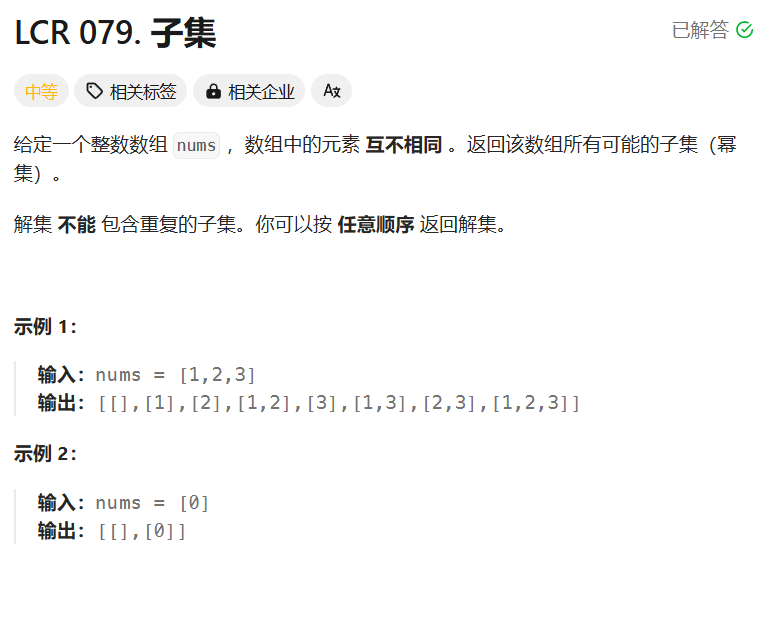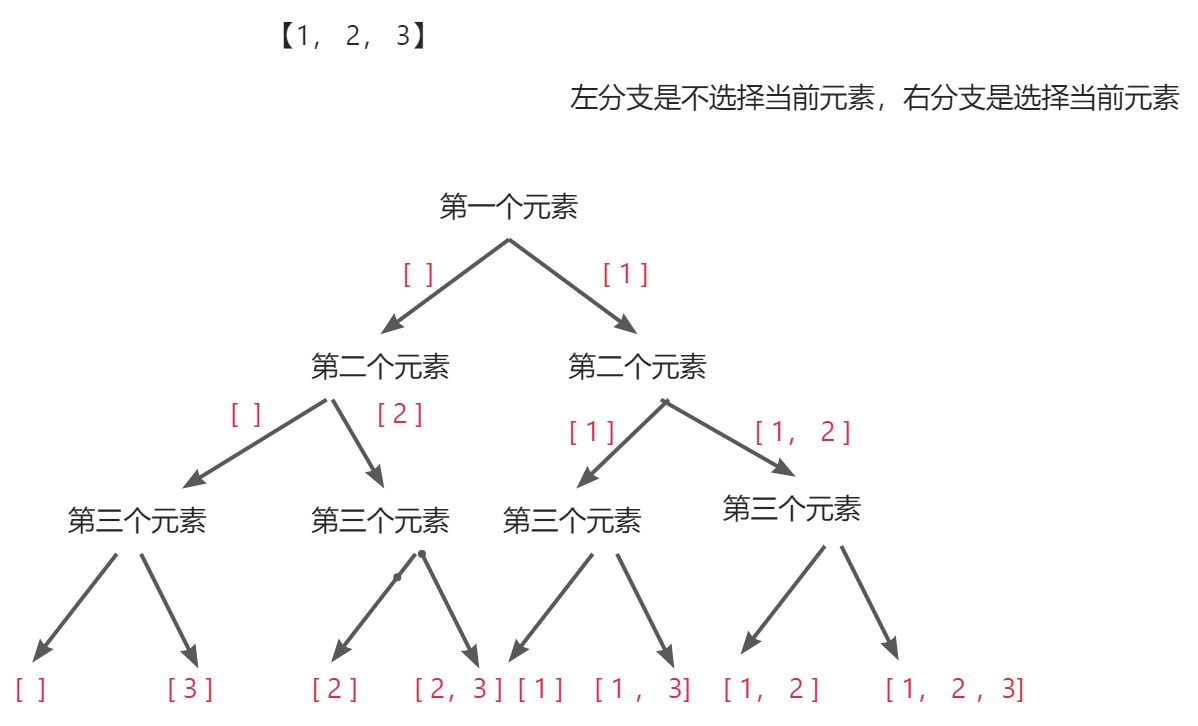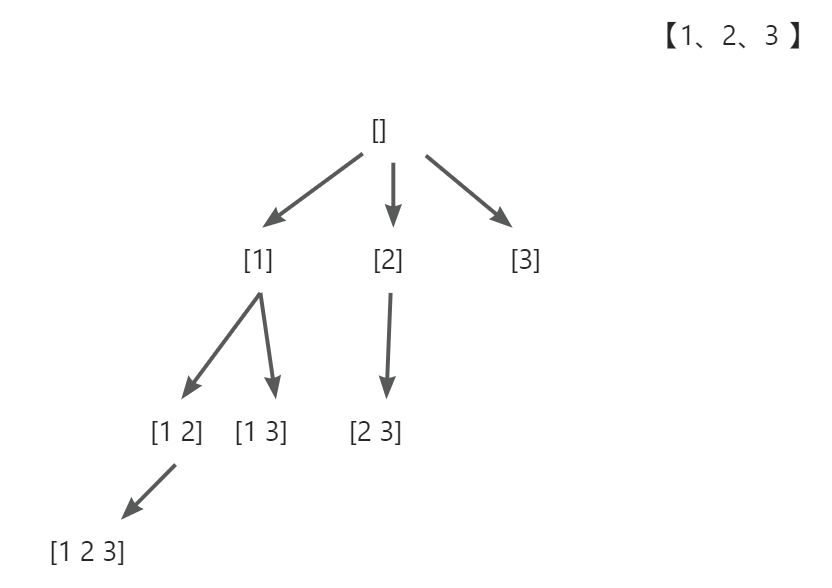一、题目
二、题解
枚举当前元素选或者不选
对应这样一个序列1 2 3, 对于这个序列的第一个元素,在最终的答案中对于每一个位置的元素,都可以选择选他或者不选他
class Solution {
public:
vector<vector<int>> res;
vector<int> nums;
vector<int> path;
int n;
void dfs(int u) {
if (u == n) {
res.push_back(vector<int>(path));
return;
}
// 选择当前元素
path.push_back(nums[u]);
// 选择当前元素的分支
dfs(u + 1);
// 回复现场
path.pop_back();
// 不选当前元素的分支
dfs(u + 1);
}
vector<vector<int>> subsets(vector<int>& _nums) {
nums = _nums;
n = nums.size();
dfs(0);
return res;
}
};枚举每个位置的情况
枚举每一个位置可能的情况,比如1 2 3这个序列,我们每次都去枚举当前位置可能的元素,比如刚开始是空,将空加入结果集合,然后第一个位置可以枚举1,当第一个位置枚举1之后,第二个位置如何选择呢,第二个位置一定是从1这个元素之后去选择,可以选择2、3变为1 2 或者 13,继续当第二位置选择2时,我们需要从2后面继续选择第三个位置作为1 2 这个序列的第三个元素,2之后只能选择3,如果第二个位置选时,我们需要从3后面选择13序列的第三个元素,3后面没有就不能选择
class Solution {
public:
vector<vector<int>> res;
vector<int> path, nums;
int n;
void dfs(int u) {
// 每一个节点都加入
res.push_back(path);
// 遍历当前每一个可以选择的元素
for (int i = u; i < n; i++) {
path.push_back(nums[i]);
dfs(i + 1);
path.pop_back();
}
}
vector<vector<int>> subsets(vector<int>& _nums) {
nums = _nums;
n = nums.size();
dfs(0);
return res;
}
};class Solution {
List<List<Integer>> res;
int[] nums;
List<Integer> path;
boolean check[];
int n;
public void dfs(int u) {
res.add(new ArrayList<>(path));
for (int i = u; i < n; i++) {
path.add(nums[i]);
dfs(i + 1);
path.remove(path.size() - 1);
}
}
public List<List<Integer>> subsets(int[] _nums) {
res = new ArrayList<>();
nums = _nums;
n = nums.length;
check = new boolean[n];
path = new ArrayList<>();
dfs(0);
return res;
}
} https://leetcode.cn/problems/TVdhkn/submissions/544682490/
https://leetcode.cn/problems/TVdhkn/submissions/544682490/

